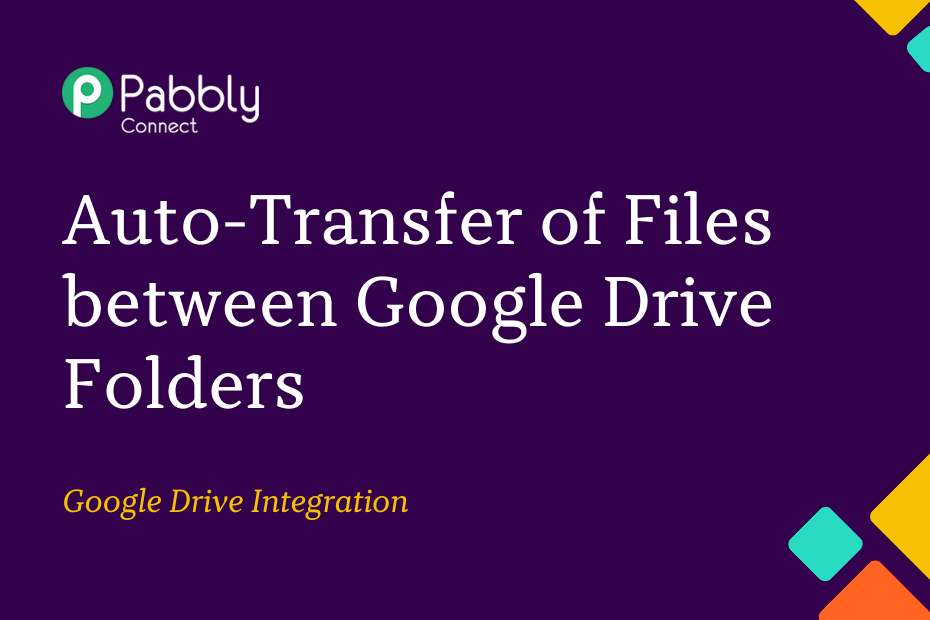Manually copying files between different folders in Google Drive can be a bit of a hassle. However, we’re here to help make your life easier by showing you a simple way to automate the process. By setting up this integration, you can upload a file to a particular folder in your Google Drive, and it will automatically be copied to another folder without any effort on your part. The best part is that it requires only a simple one-time setup, for which we will use Pabbly Connect.
To start the process, we’ll first connect Google Drive and Pabbly Connect, which will enable us to gather any files that are uploaded in your designated folder. After that, we’ll establish another link between Pabbly Connect and Google Drive, but this time the purpose will be to duplicate the file into a separate folder.
Steps to Automatically Transfer Files between Google Drive Folders
1. Sign In / Sign Up to Pabbly Connect and Create a Workflow
2. Setup Google Drive as the Trigger App to Fetch Files
3. Setup Google Drive as the Action App to Copy Files
Step 1:- Sign In / Sign Up to Pabbly Connect and Create a Workflow
A. Sign In / Sign Up
To begin this process, visit Pabbly Connect and create your account by clicking on the ‘Sign Up Free’ button. You can also click on Sign In if you already have an account.
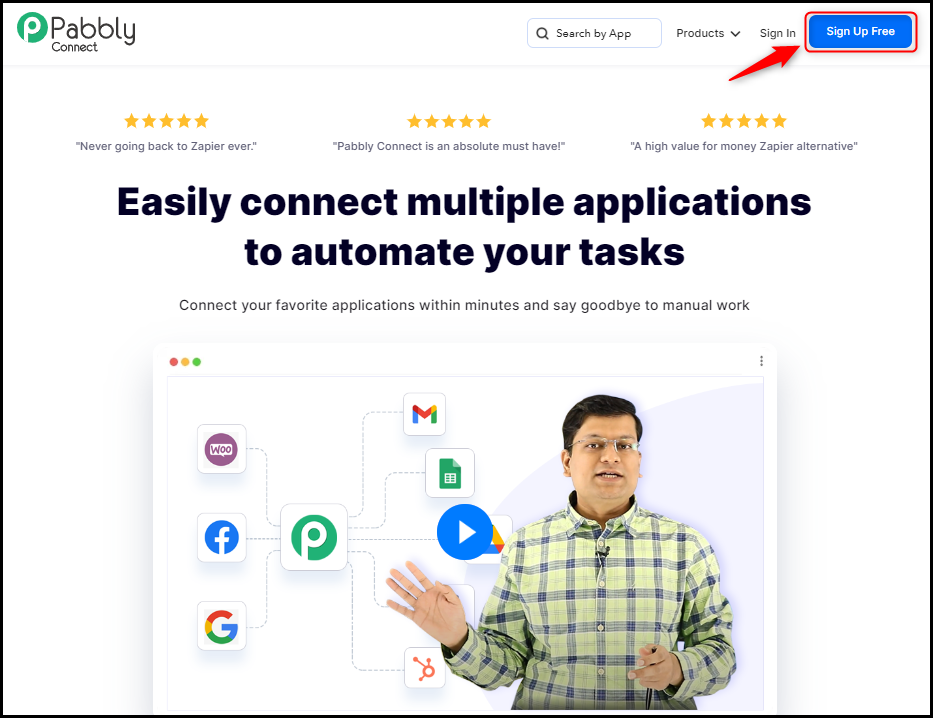
Click on the Pabbly Connect ‘Access Now’ button

B. Create Workflow
To create a new workflow, click the ‘Create Workflow’ button.
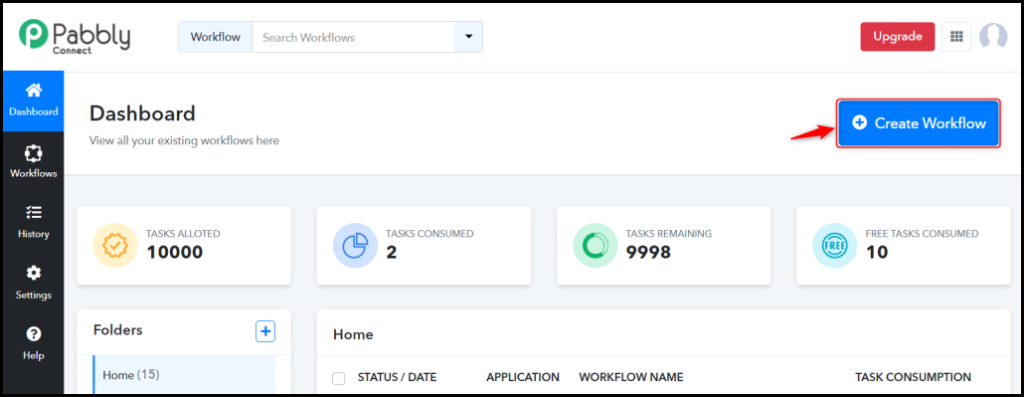
Name your workflow, and click on ‘Create’.
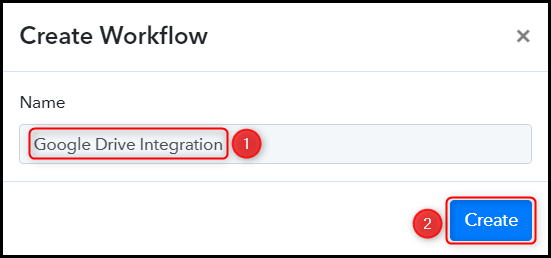
Step 2:- Setup Google Drive as the Trigger App to Fetch Files
Let’s establish a link between Pabbly Connect and Google Drive, enabling us to fetch the details of the uploaded files in the designated folder that we intend to duplicate.
A. Trigger App
Trigger allows us to choose the application that will receive the data for Pabbly Connect. In our case, it would be Google Drive.
Choose ‘Google Drive’ as the Trigger App, select ‘New File in Specific Folder’ as an Action Event, and click on ‘Connect’.
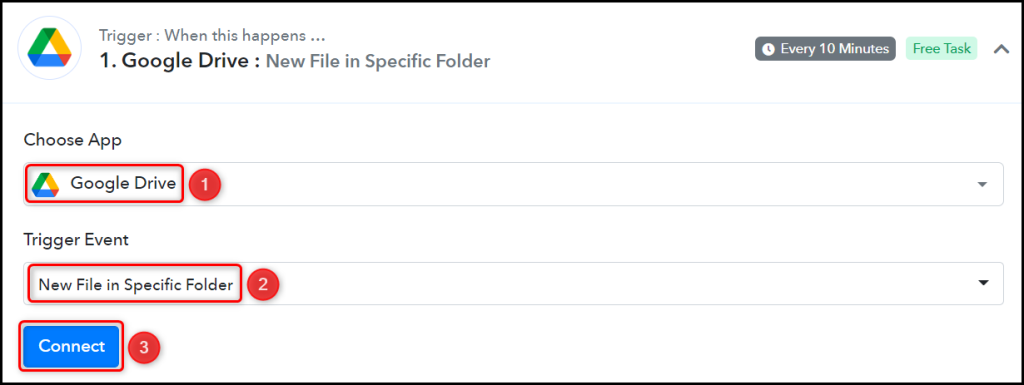
B. Connect Google Drive Account
To connect with your Google Drive account, select ‘Add New Connection’ and click on ‘Sign in with Google’. Afterward, grant the necessary permissions.
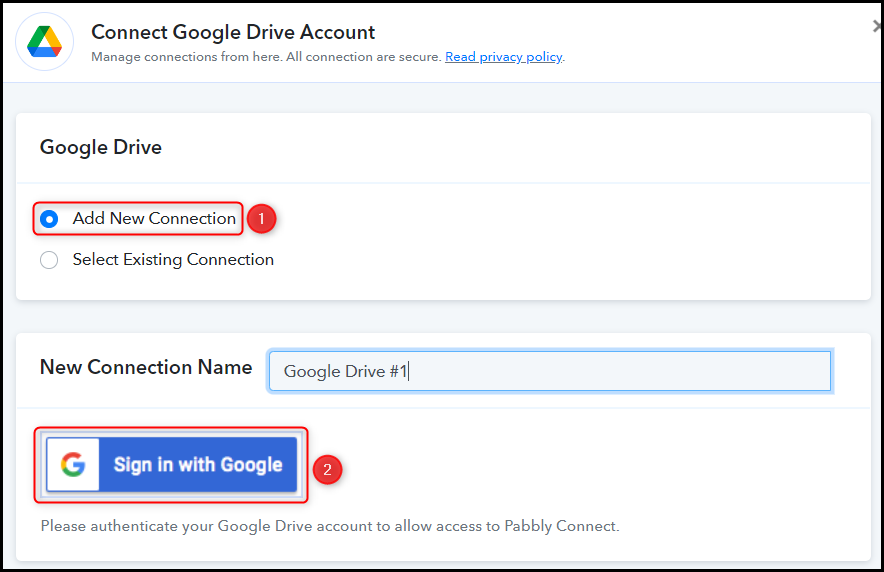
Choose the folder that contains the file you want to retrieve, and click on ‘Save & Send Test Request’.

After you click ‘Save & Send Test Request,’ Pabbly Connect will automatically fetch the latest file that was uploaded to that specific folder in your Google Drive.
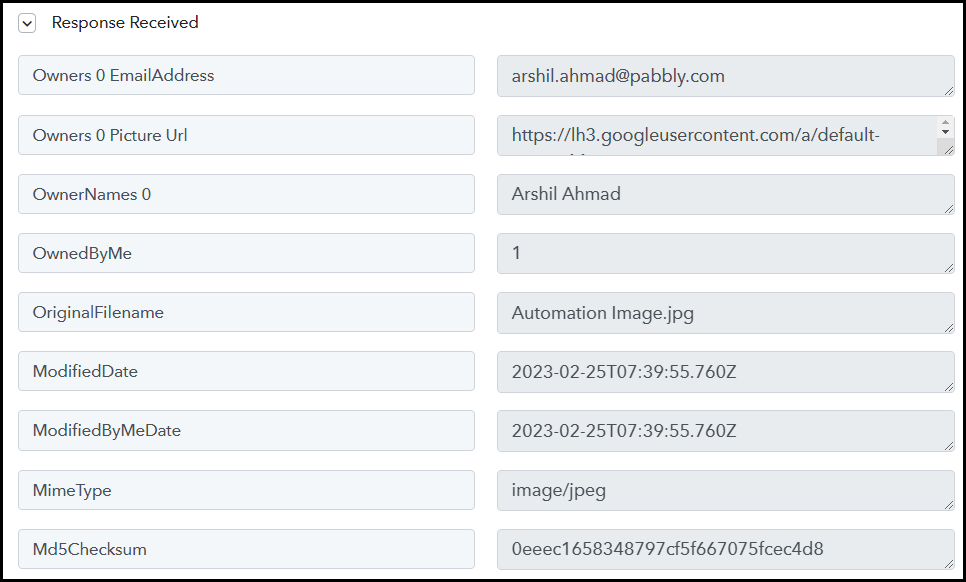
Step 3:- Setup Google Drive as the Action App to Copy Files
Action allows us to choose the application that will get executed by the workflow trigger.
As we have already collected the file details, all that is left is to duplicate the file to another folder in your Google Drive. To accomplish this, we will configure Google Drive as our Action App.
A. Action App
Choose ‘Google Drive’ as the Action App, select ‘Copy a file’ as the Action Event, and click on ‘Connect’.
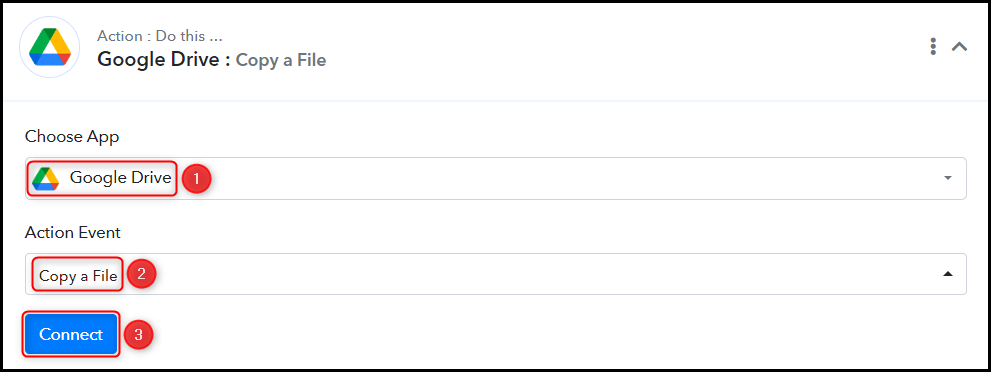
B. Establish Connection
Since we are already connected to the Google Drive account, all we need is to ‘Select Existing Connection’ and click on ‘Save’.
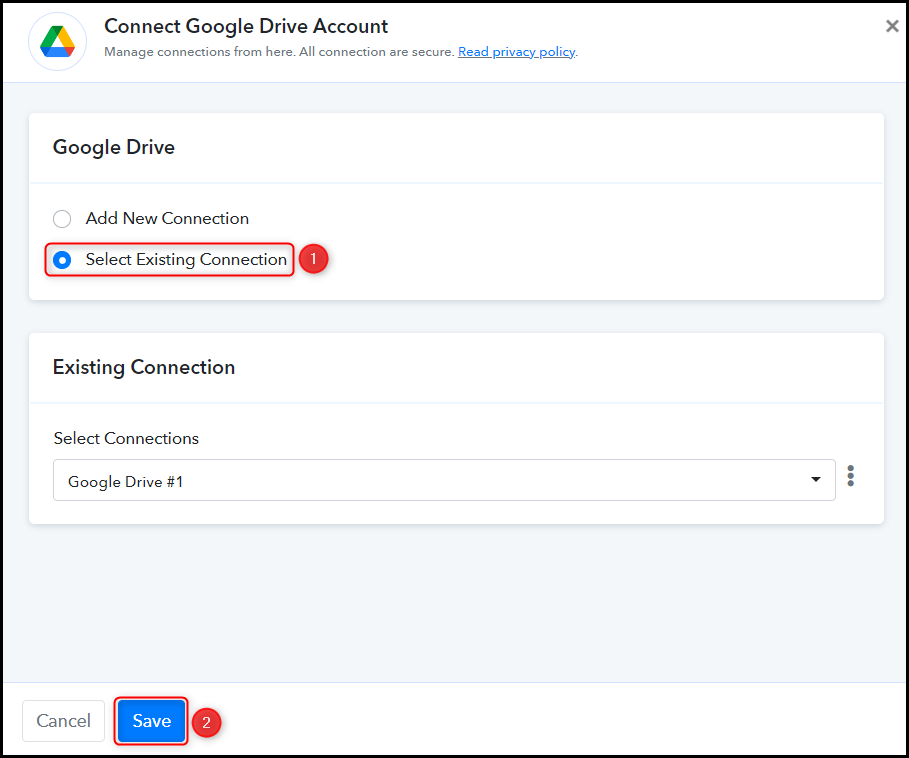
C. Map Necessary Fields
Since we have already captured the file details, our next step is to map those details from the previous step. By mapping, we can ensure that our data stays dynamic and adapts according to the responses we receive.
Enable the mapping button, and map the File Id from the previous step.


Choose the Folder where you want to store the copied files.

Map the Copied File Name from the step above, and click on ‘Save & Send Test Request’.

As soon as you click on Save & Send Test Request, the file will be replicated and saved in your selected folder.
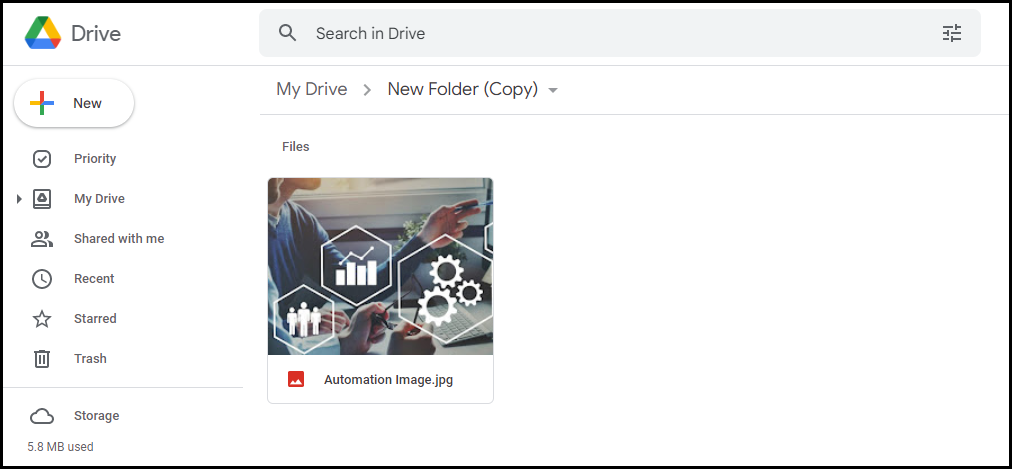
Our automation is finished. We have successfully established an integration to replicate files from one folder in your Google Drive to another. From now on, all you need to do is upload the file, and Pabbly Connect will automatically make a copy of the same file in a different folder of your Google Drive.
You can copy this entire workflow by clicking this link.
Sign Up for a free Pabbly Connect account, and start automating your business
Subscribe to our Youtube Channel for more such automation
For any other queries, visit our forum
